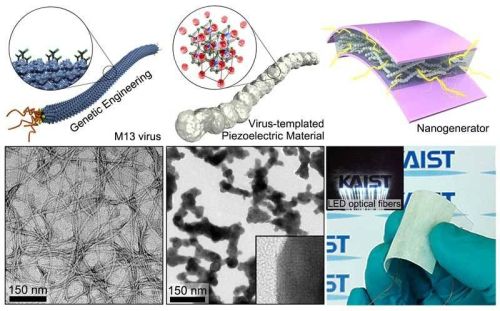Nature has an innate ability of fabricating organic structures at the nano scale, self-cleaning mechanism or water repellence in lotus effect best describes this tendency. Dexterously the leaves of lotus flower repel water. The complex micro and nanoscopic architecture of the surface is responsible for creating physical atmosphere that assist in disengaging water molecules to the leaves.
Scientists today are working towards replicating the mechanism by using nature as a template. However, imitating the natural process is not that easy especially when working on the nanoscale, often it requires toxic and expensive conditions. In order to find a solution to this problem, researchers at the Korea Advanced Institute of Science and Technology (KAIST) have come up with a synthesis process, which they say is close to nature and is less expensive than the conventional method.
These researchers have tailored an artificial virus, the M13 viral gene, to form a template for a piezoelectric material, barium titanate (BaTiO3). They envision fabricating a high efficiency nanogenerator from the piezoelectric material using the M13 viral gene.
In a press release, Professor Keon Jae Lee from the Department of Material Science and Engineering at KAIST said,
This is the first time to introduce a bio-templated inorganic piezoelectric material to a self-powered energy harvesting system, which can be realized through eco-friendly and efficient material syntheses.
This, however, is not the first time an artificial virus is employed to perform the self-assembly of devices. Angela Belcher, a materials scientist at the Massachusetts Institute of Technology, has been working on breeding microbes to assemble nanometer-scale structures that could be used in circuits.
Nevertheless, nanogenerator fabricated by virus-templated BTO nanostructure is highly stable and suitable for energy harvesting. This might potentially lead it towards energy harvesting technology at the nanoscale.
Source: Robaid




